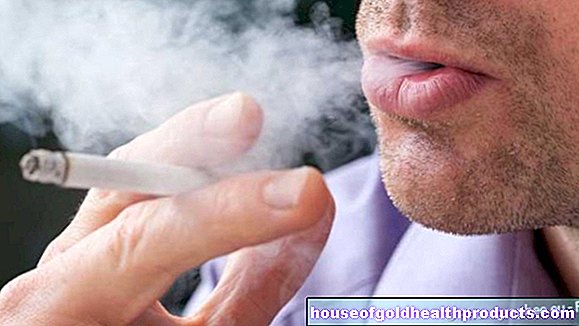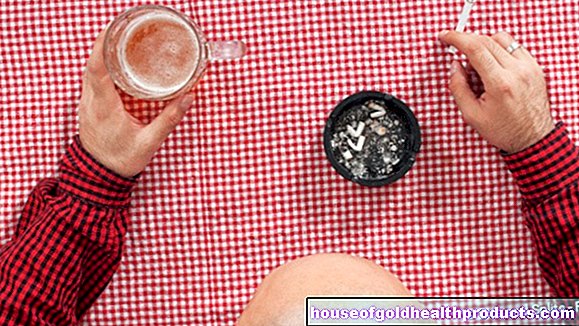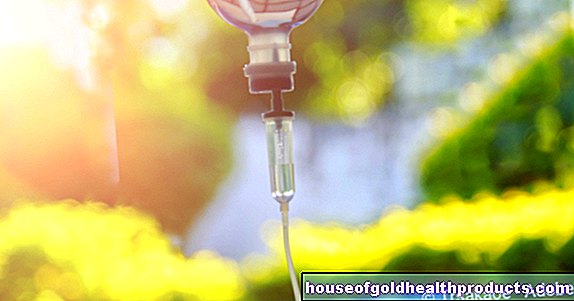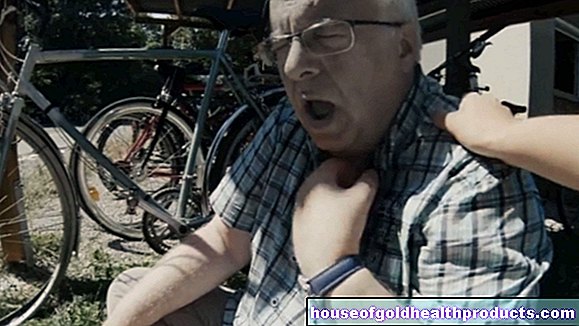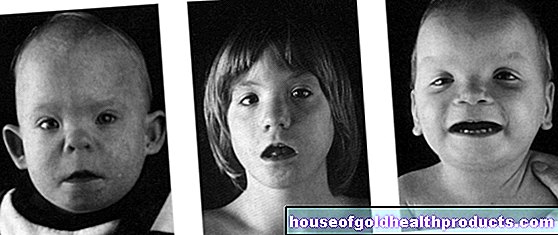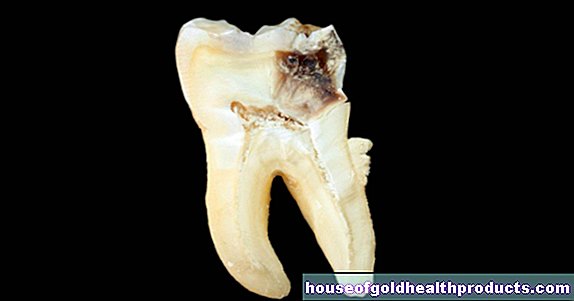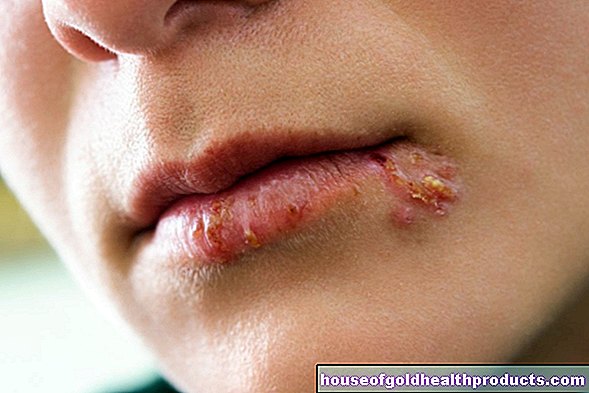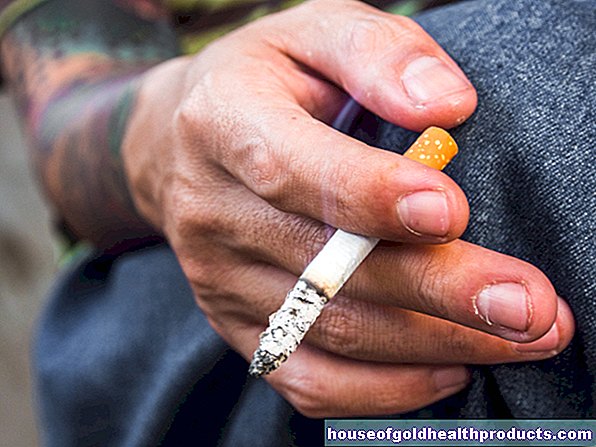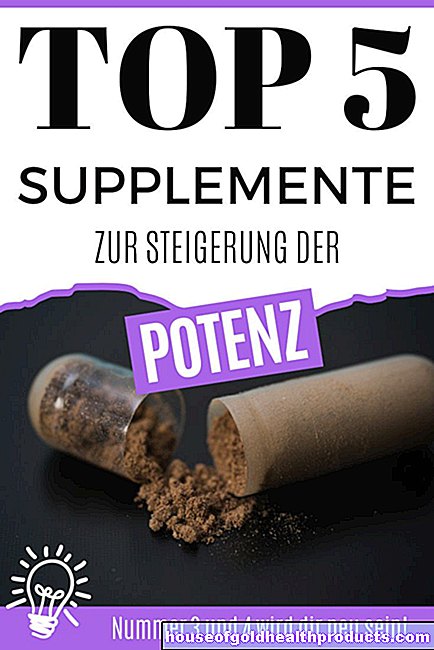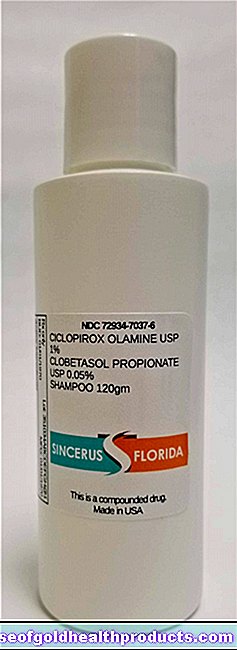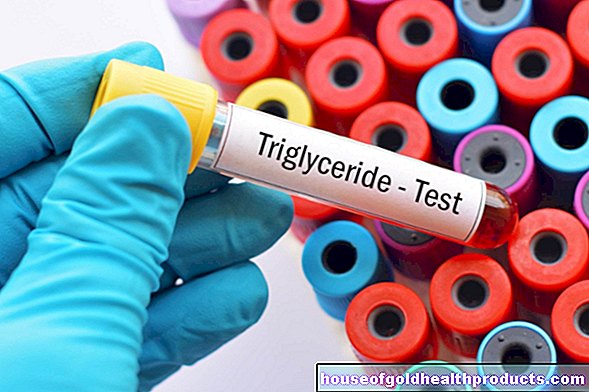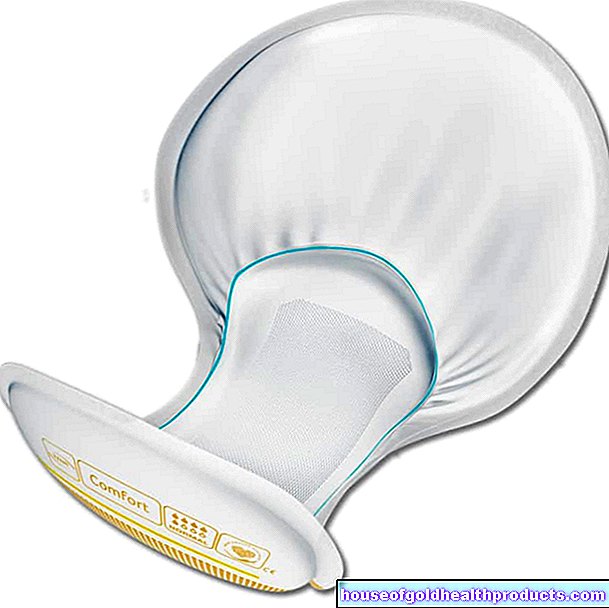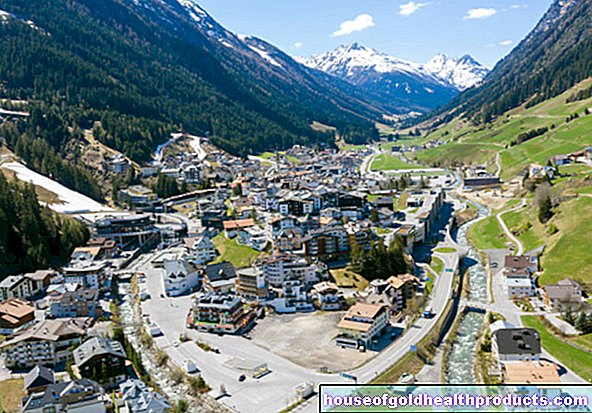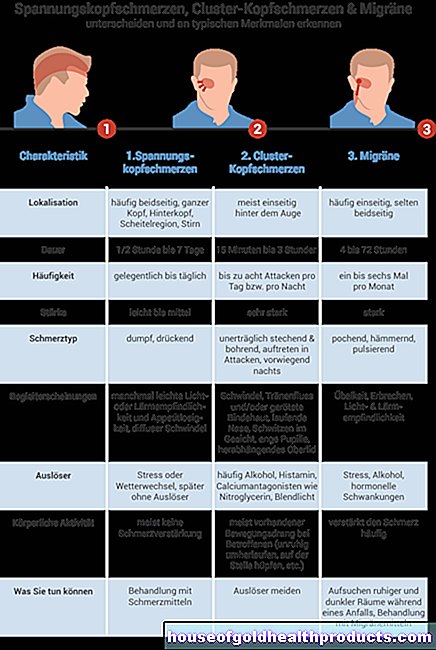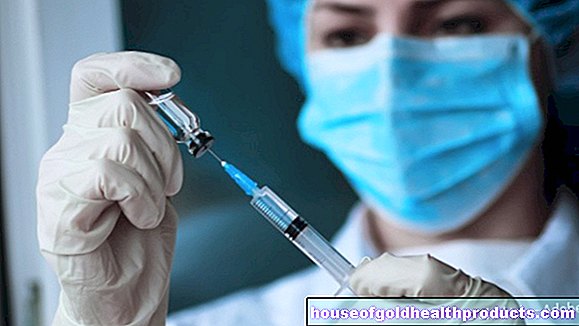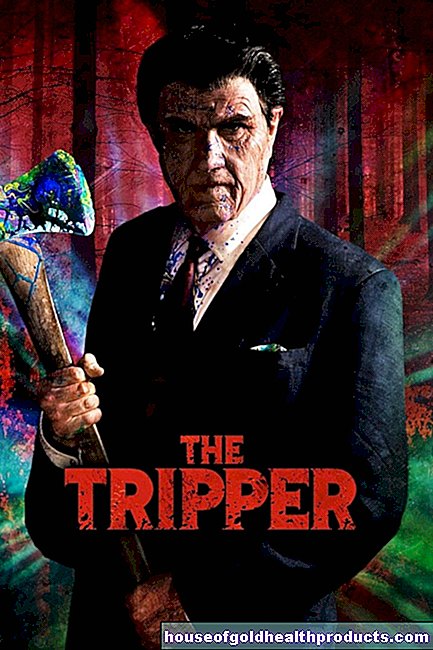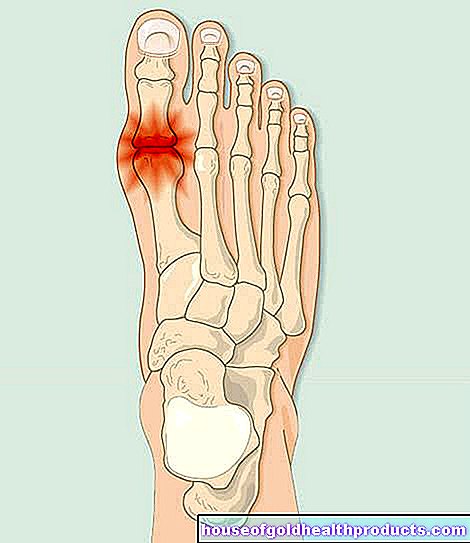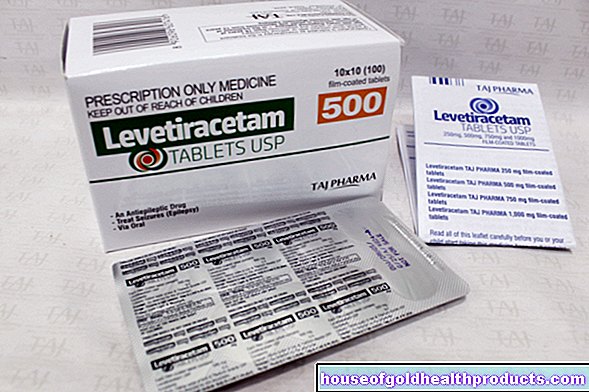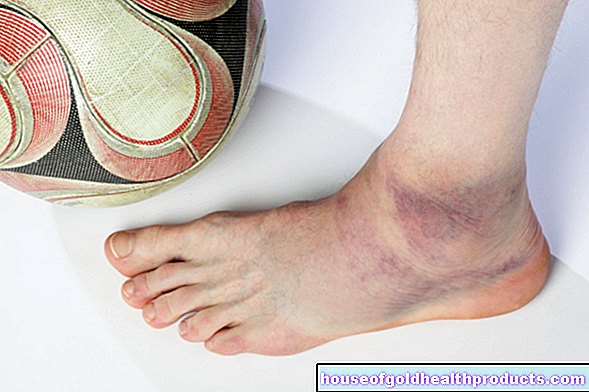Dupuytren's contracture
Mareike Müller is a freelance writer in the medical department and assistant doctor for neurosurgery in Düsseldorf. She studied human medicine in Magdeburg and gained a lot of practical medical experience during her stays abroad on four different continents.
More about the experts All content is checked by medical journalists.Dupuytren's contracture (also Dupuytren's disease, Dupuytren's contracture, Dupuytren's disease) is a disease of the tendons of the hand. As the tendon structures in the palm of the hand shorten, patients lose the ability to stretch their fingers. The symptoms can be improved with the help of an operation. Often, however, the symptoms reappear after a certain period of time. Read all about the symptoms and treatment of Dupuytren's contracture here!
ICD codes for this disease: ICD codes are internationally recognized codes for medical diagnoses. They can be found, for example, in doctor's letters or on certificates of incapacity for work. M72

Dupuytren's contracture: description
Dupuytren's contracture is a disease of the hand tendons named after Guillaume Dupuytren. The French doctor first reported the disease to his students in 1831. Dupuytren's contracture mainly affects men over the age of 50. In women, the disease is milder overall and only occurs at an older age. Dupuytren's disease is particularly common among people of northern European origin.
The word contracture comes from the Latin “contrahere”, which means “to contract”. In medicine, it describes the shortening or shrinking of structures such as muscles or tendons. This change restricts mobility in the joints.
The Dupuytren contracture describes a clinical picture of the hands. Similar diseases also occur on the foot or the penis. They are then called Ledderhose's disease (on the foot) or Induratio penis plastica (on the penis).
Dupuytren's contracture: symptoms
As a rule, Dupuytren's disease is painless. The patients first notice strand-like hardening on the ring finger and little finger. Over time, the flexor tendons of the affected fingers shorten. This fixes the fingers in the flexed position. Patients find it increasingly difficult to straighten their fingers. In addition, the palm fascia (palmar aponeurosis) scars, so that patients can feel small knots on the palm of the hand.
Dupuytren's contracture often affects both hands. The extent of the contractures on the hands can vary.
Dupuytren's contracture: causes and risk factors
The exact cause of the Dupuytren's contracture is not yet known. It is believed that genetic influences play a role in its development. The course of the disease is also likely to be influenced by genetic information. For example, Dupuytren's disease runs much faster and more severely in some people than in others.
In addition to the genetic component, other diseases also play a role in the development and course of Dupuytren's contracture. Many patients also suffer from diabetes mellitus. But alcohol abuse and seizure disorders (epilepsy) are also diseases with which Dupuytren's contracture is more common.
Dupuytren's contracture: examinations and diagnosis
If you feel tension in the palm of your hand and have problems moving, especially stretching your fingers, consult an orthopedic doctor. If you suspect Dupuytren's disease, he will first ask you in detail about your medical history (anamnesis). He will ask you the following questions, among others:
- Do you have and restrictions on moving your hands?
- How long have the complaints existed?
- Are both hands affected by the discomfort?
- Do you have a blood relative or have a blood relative suffered from Dupuytren's disease?
Your doctor will then do a physical examination. He will look at your hands to see if there is any skin retraction. He then scans the palm of your hand to feel any knotty changes or hardening on the palm or along the flexor sides of the fingers. He then moves your fingers one by one to assess the severity of the restriction on movement.
Dupuytren's contracture: staging
Dupuytren's contracture is divided into different stages. A common classification is that of Tubiana. The strengths of the contractures of all fingers are recorded and classified as follows:
- Stage 0: no complaints
- Stage 1: contractures between 0 and 45 °
- Stage 2: contractures between 45 and 90 °
- Stage 3: contractures between 90 and 135 °
- Stage 4: contractures over 135 °
Dupuytren's contracture: Similar clinical pictures
The doctor must differentiate between other diseases from a possible Dupuytren's disease. These include:
- Callus (new formation of bone substance, for example after a break)
- Cysts (cavities filled with fluid)
- Rheumatoid arthritis ("joint rheumatism")
- so-called intrinsic contractures (start from the joint or synovium, not from the tendons or muscles)
- Overbones in the palm of the hand (palmar ganglia)
- Tendinitis (tendosynovitis)
- Lump (tumor)
Dupuytren's contracture: treatment
The treatment of choice is Dupuytren's disease surgery. However, it should not be done too early in the course of the disease. Dupuytren surgery is recommended if the patient can no longer lay the affected hand flat on the table. This is usually reached in stage 1 to 2, i.e. with contractures over 30 °.
Conservative treatment, i.e. non-operative Dupuytren's disease therapy, does not achieve any demonstrable success in Dupuytren's contracture. The progression of the disease cannot be stopped by massages or physiotherapy alone.
Dupuytren's contracture: surgery
In the Dupuytren operation, the shortened aponeurosis on the palm of the hand is split in a zigzag shape. This technique makes it possible that little or no scars are created by the operation. The aim of the operation is to remove all of the shortened tissue.
The main aim of the operation is to restore hand mobility and not to cure the disease. Damage to blood vessels and nerves can occur as a side effect of the operation.
Dupuytren treatment after surgery
After the operation, the hand is immobilized in a forearm cast for about five days. After about two weeks, the stitches can be pulled. It is important that rehabilitation measures such as occupational therapy and physiotherapy are started early after the procedure in order to ensure the mobility of the hand. Some patients develop Sudeck's disease, a painful dysfunction of the hand.
The goals of postoperative Dupuytren hand therapy are:
- Prevention or at least alleviation of edema, contractures and wound healing disorders
- Preservation of the ability to stretch achieved through Dupuytren's surgery
- Pain reduction to freedom from pain
- Restoration of normal mobility and strength with strengthening of functions such as grasping
- Strengthening everyday coping and achieving normal work ability
Dupuytren's contracture: disease course and prognosis
Dupuytren's contracture takes different courses in different patients.The disease usually begins with a hardening of the palm of the hand. This can last for months to years without any further changes. This is usually followed by retraction of the skin and problems with stretching the fingers.
In some patients, the Dupuytren's contracture is much faster than in others. Even after successful surgical therapy, Dupuytren's contracture can recur after years.
Tags: laboratory values desire to have children first aid
